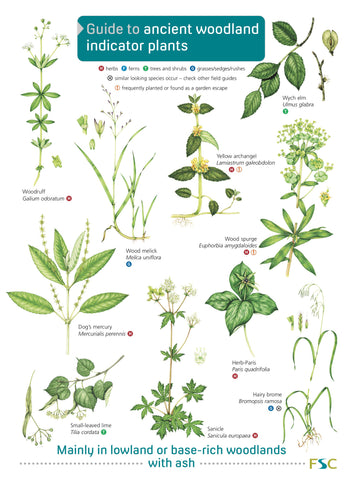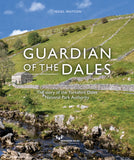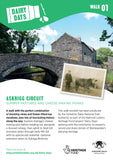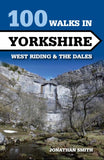
Guide To Ancient Woodland Indicator Plants - FSC
The FSC Ancient woodland indicators guide features over 40 flowering plants and ferns. The provide evidence that a site has been continuously wooded for hundreds of years.
The beautiful colour illustrations are grouped by woodland type: lowland base-rich woods, upland acid woods and woods on boggy soils. Also included is a table summarising the ancient woodland plants that are best suited as indicators in each part of the country.
Ancient woods have been around for many centuries – long enough to develop as ecosystems that are rich, complex, and irreplaceable. In the UK, our ancient woodlands are sites that have been wooded since medieval times. A threshold date of 1600AD is used (1750AD in Scotland), as this is when reliable maps became more widely produced, and pre-dates the time when tree planting became common.
Having developed over such long timescales, ancient woodlands have unique features such as relatively undisturbed soils and communities of plants and animals that depend on the stable conditions ancient woodland provides. They are also living history books, with features such as medieval boundary banks, charcoal hearths, and old coppice stools – things that tell us how woodland was used in centuries past.
Ancient woods are a delight to visit. Some produce spectacular displays of spring flowers with carpets of bluebells and bursts of wood anemones. Other so-called ancient woodland indicator species can also be found – hinting at a long continuity of woodland cover. This guide aims to provide an introduction to these indicator plants, and to help you find and identify them.
FSC Ancient woodland indicators guide was produced in partnership with the Woodland Trust.
What about adding one of these?..





